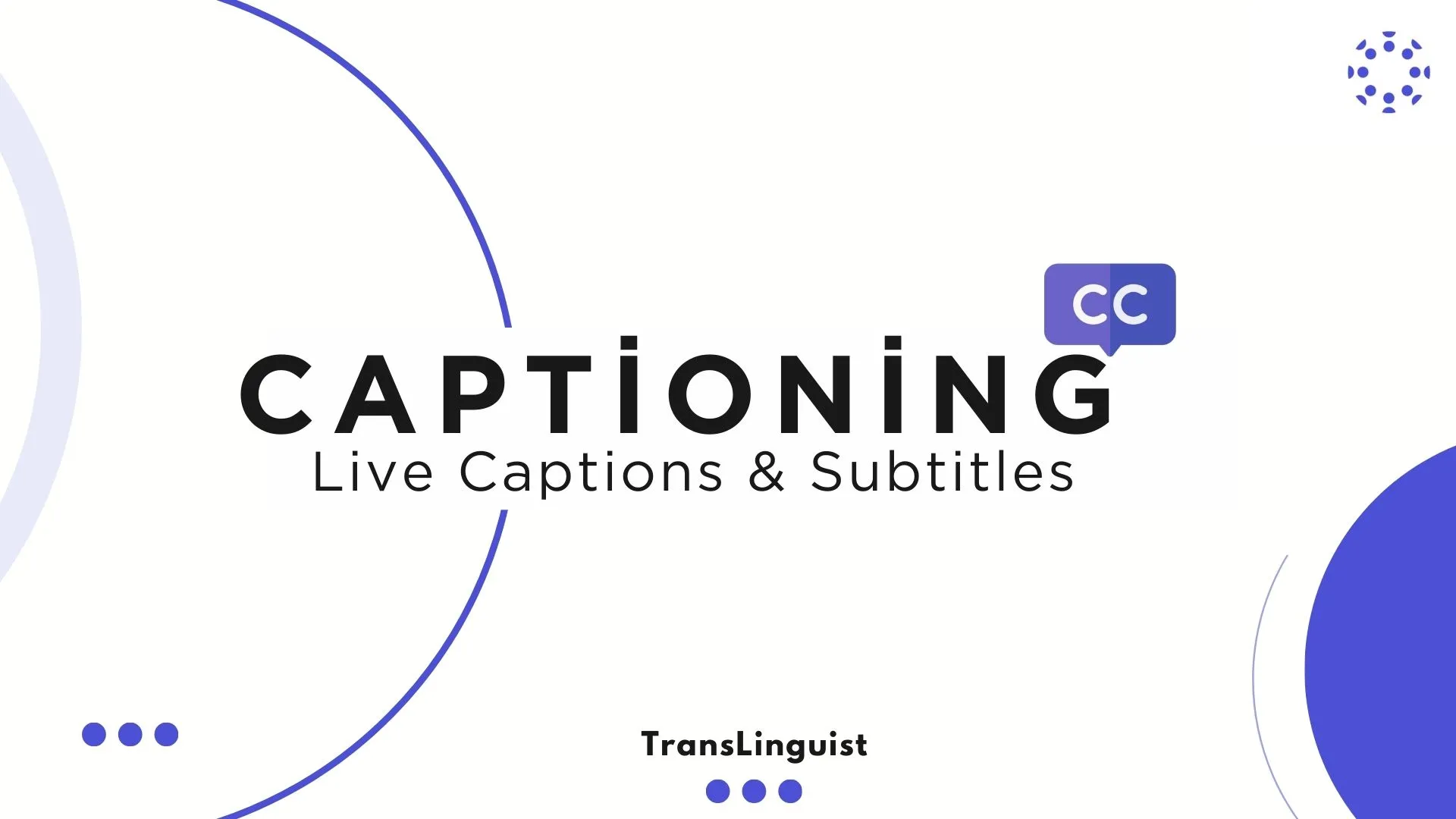Communication has a much more advanced meaning than just speaking. It is about making sure that everyone can understand and comprehend the message. Captioning makes this possible. You may have noticed words at the bottom of the movies or on a video during a meeting. Those words are called captions. They give people access to spoken language in text form.
What Is Captioning?
Captioning is the process of changing speech into text and displaying it on a screen. It can be done for live programs or recorded content. Captions are not just for entertainment. They are used in schools, businesses, and public services too.
Captioning can be divided into two main types: closed captions and live captions. Closed captions can be turned on and off by viewers as they are generated before the content is shared. On the other hand, live captions are made simultaneously as the person is speaking. Both have their significance; however, live captions are particularly useful in events and meetings.
Importance of Captions:
- Captions give access to people who are deaf or hard of hearing. They are included to ensure that everyone is able to understand the message clearly.
- Think about watching a video in a noisy café. Captions make it easy to follow, even if you cannot hear clearly. Or imagine joining a meeting where the speaker has a heavy accent. Live captions help you catch every word.
- They also improve focus and memory. Reading while listening helps people remember more. For students, captions are a great way to support learning. For employees, they make virtual meetings more effective.
What Are Live Captions?
Live captions are captions created instantly while someone speaks. They appear within seconds of the spoken words. You can see them during webinars, conferences, online classes, or even on social media live streams.
Unlike pre-recorded captions, live captions work in the moment. They allow people to follow conversations without delay. This makes them especially useful in fast-paced environments where missing even a few words could cause confusion.
How Do Live Captions Work?
Live captions are produced in two ways.
Human Captioners – Professionals listen and type speech very quickly using special tools. They are highly accurate and can handle complex language.
Automatic Speech Recognition (ASR) – Software powered by AI listens and converts words into text instantly. It is faster and cheaper but can be less accurate when there is noise, unclear speech, or many speakers.
Often, both methods are combined. AI provides speed, while human captioners correct mistakes. This mix ensures that live captions are both fast and accurate.
Benefits of Live Captions
Live captions offer many benefits:
Accessibility: They make sure people with hearing challenges can participate.
Engagement: They keep audiences focused during long sessions.
Flexibility: You can watch without sound in quiet or public places.
Clarity: They help understand fast talkers, accents, or technical terms.
Inclusion: They make sure everyone, regardless of ability, can take part.
Because of these benefits, live captions are becoming common across industries.
Where Are Live Captions Used?
Live captions are now widespread. In the following lines, we shall see how they are being utilized in various industries:
Education: Teaching professionals can use them in online classes, lectures, and workshops. Non-native speakers and deaf students find them very useful.
Business: Enterprises use captions in meetings, training, and conferences. This enables employees to stay connected.
Media: Many news channels, sports events, and live TV shows include captions to reach the maximum audience.
Public Services: Government speeches, health updates, and community events use captions for the mass public.
Moreover, common tools like video calls also have the option to offer live captions. This shows how important they have become.
Challenges of Live Captions
While live captions are powerful, they are not perfect. Automatic systems may struggle with background noise, multiple speakers, or strong accents. Human captioners are more accurate, but they are costly and not always available.
Although live captions have a lot of advantages but they are not perfect. Sometimes automated captions struggle with background noise or accents. On the other hand, captions created by humans are more accurate, but are costly and not always available.
There is also the issue of delay. Even after using the best technology, captions can delay for one to two seconds. In most cases, it is fine, but in the case of very fast conversations, it becomes a big challenge.
However, even with these limitations, the technology is advancing quickly. By using better AI and speech recognition tools, live captions are becoming more accurate and affordable.
The Future of Live Captions
Live captions are no longer optional. They are now a basic part of digital communication. In the future, we can expect even greater improvements. Speech recognition will handle more languages and accents. AI tools will reduce errors. Captions will appear faster, with fewer delays.
Moreover, inclusivity is on the rise. Many schools, companies, and organizations want to reach the maximum people. For this purpose, live captions will continue to play an important role.
Conclusion
Captioning has much more meaning than text on a screen. It is more about connection, inclusion, and access. It is about making sure that one’s speech is understood by all.
No matter if your domain is education, business, or public life, captions allow everyone an equal chance to participate. If you have not used live captions yet, you can turn them on during your next online event. You will see and be surprised by how efficient it is to follow and remember.
Live captions are not just a tool for accessibility. They are a step toward clearer communication for everyone.
FAQs
What do you mean by captioning?
Captioning is the process of converting the audio content of a television broadcast, webcast, film, video, CD-ROM, DVD, live event, or other productions into text and displaying the text on a screen, monitor, or other visual display system.
What is the importance of captions?
While captions are critical for viewers who may be Deaf or hard of hearing, captions also help viewers who may have a learning disability, an attention deficit, or autism.
What is the meaning of caption information?
A caption is a short descriptive or explanatory text, usually one or two sentences long, which accompanies a photograph, picture, map, graph, pictorial illustration, figure, table or some other form of graphic content contained in a book or in a newspaper or magazine article.
What kind of information should captions include?
Include onomatopoeia when possible. Place the description of the sound effect as close as possible to the sound source. Use punctuation to indicate speed or pace of sound. Caption background sound effects only when they're essential to the plot.



